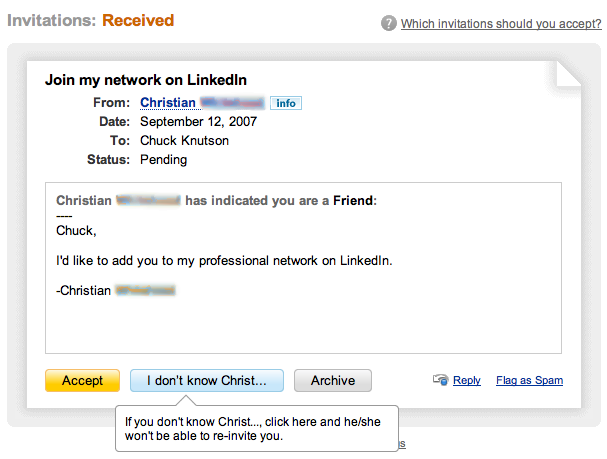I was honored to be the commencement speaker at the June 2008 graduation ceremony for ITT Technical Institute-Murray last Saturday, June 7 at the Hilton Hotel in Salt Lake City, Utah.
Here’s the speech:
Thank you Mr. Bowcutt. I’m humbled and honored to be with you today.
I understand that you’re a generally older crowd than I might find at a place like BYU or the UofU. In 1982 I was facing the prospect of beginning school at the University of Iowa as a 22-year-old freshman. I was expecting to graduate at age 26, which seemed at the time like completely over the hill. I shared my concerns with a friend, about how I’d be 26 when I finished my degree if I went to college. He looked at me and asked, “How old will you be in four years if you don’t go to college?” “Um… 26?”
In fact it was six years later that I graduated from BYU at age 28, by which time I was married and the father of two little girls. I finished my Masters Degree at BYU when I was 34 and we had five kids. I finished my Ph.D. in Computer Science from Oregon State University when I was 38 and we had six kids. I started my professorial career at BYU at age 40, which was 8 years ago. And I’ve still got 19 more years to retirement!
It is NEVER too late to finish your degree!!
You are to be commended for your efforts and your commitment. And your families are to be commended for their sacrifices in your behalf.
I want to begin by quoting the late Douglas Adams [1], who was the author of The Hitchiker’s Guide to the Galaxy.
I’ve come up with a set of rules that describe our reactions to technologies:
1. Anything that is in the world when you’re born is normal and ordinary and is just a natural part of the way the world works.
2. Anything that’s invented between when you’re fifteen and thirty-five is new and exciting and revolutionary and you can probably get a career in it.
3. Anything invented after you’re thirty-five is against the natural order of things.
You are receiving Associates and Bachelors Degrees in various technology fields. All of which are extremely cool. Most of which were invented between when you were fifteen and when you will be (or in some of your cases, when you were) thirty-five. All of which will provide for you an endless stream of puzzle-solving satisfaction throughout your careers. And all of which will allow you to find yourself completely obsolete within the next five years.
If that terrifies anybody, just remember that I completed my Bachelors Degree in Computer Science 20 years ago this spring, and my doctorate in Computer Science more than 10 years ago, and I now know absolutely nothing about anything.
But… I have a degree, and I am tenured.
That’s only partially true. I do know one thing, and it turns out it makes all the difference. I know that I do not know, and I strive constantly to figure out both what I do not yet know, and what the answers are to the questions I have not yet asked.
Lest we wrap ourselves around our own axles too quickly, let me introduce you to the Laws of Ignorance as described by Dr. Philip Armour in his book “The Laws of Software Process” [2].
We’ll begin with zero, as we should in a technology friendly environment.
Zeroth Order Ignorance or Lack of Ignorance
I have Zeroth Order Ignorance when I know something, and I can demonstrate my lack of ignorance in some tangible form. Zeroth order ignorance is provable, simply by demonstrating that I know something.
How would I congratulate you in Italian? “Tanti Auguri!” This is just something I know.
First Order Ignorance or Lack of Knowledge
I have first order Ignorance when I do not know something and I can readily identify that fact.
How would I congratulate you in Etruscan? I have absolutely no idea. But I am aware that I do not know, and I’m quite confident that I could find out if I wanted to.
Second Order Ignorance or Lack of Awareness
I have Second Order Ignorance when I do not know that I do not know something.
In other words, not only am I ignorant of something, I am unaware of what it is I am ignorant about.
A few minutes ago some of you turned to your neighbor and said, “Is Etruscan a language?”
In order to give a definitive example of Second Order Ignorance I would have to describe something of which I am unaware, and this is obviously not possible.
Third Order Ignorance or Lack of Process
I have Third Order Ignorance when I do not know of a suitably efficient way to find out that I do not know that I do not know something.
In other words, I lack a suitable knowledge-gathering process that would move me to Second Order Ignorance (where I would learn that I didn’t know something) which would move me to First Order Ignorance (where I would learn just what it was that I didn’t know) and from there to Zeroth Order Ignorance (where I would obtain the answer to the question I became aware of at the previous level).
Sitting in front of the television is in general not a suitable knowledge-gathering process. Depending of course on the types of knowledge you’re interested in. For example, what Rosie O’Donnell said this week about her time on The View. Some of you are asking yourselves, “Who is Rosie O’Donnell, and what is The View?!” To you I say, “Tanti Auguri.”
Insufficient knowledge-gathering processes remind of the man who took a speed reading course, and read “War and Peace” in 20 minutes. When asked, what it’s about, he replied, “Russia.”
Fourth Order Ignorance or Meta Ignorance
I have Fourth Order Ignorance when I do not know about the Five Orders of Ignorance.
Now, let me tell you one more thing that you need to know to continue on successfully in your careers.
Throughout your education in grade school, high school, and college, you have been fed a very specific and dangerous lie. You have been told that the teachers and professors know what the answers are, and that your job as a student is to learn those answers so that when you encounter those questions, you can answer them.
But guess what? The first time you write software (for example), and somebody pays you to do it, it’s because nobody ever did it before. That’s why they’re paying you to do it. If someone else already did it, it’s much cheaper to buy it for $30 and drop the payroll by $100K.
As you move out of a Zeroth Order Ignorance mentality, in which you think your job is to know something, you come to realize that in fact, all of the knowledge you possess is transient and subject to obsolescence.
As you move out of a First Order Ignorance mentality, in which you think your job is to answer questions, you come to realize that in fact, all the questions are open to discussion. They might not be the right questions to be asking at all.
Your most productive professional time will be spent in Second and Third Order Ignorance. You need to constantly expose yourself to new avenues of learning, becoming increasingly aware every day of every year of your life until you are dead that there are significant fields of study — science, art, literature, technology — of which you have been completely ignorant your entire life. By building the habit of being an informational sponge, you equip yourself to discover important questions that you never imagined existed and to tie those into professional areas to which you never imagined they were connected.
Thomas Friedman, author of “The World is Flat,” said the following [3]:
The further we push the boundaries of knowledge and innovation, the more the next great value breakthroughs — that is, the next new hot-selling products and services — will come from putting together disparate things that you would not think of as going together.
In other words, every great innovation reflects a transition from Third Order Ignorance to Second Order Ignorance.
The big deliverable is the question, not the answer! Your value add to an organization must be something that can’t be outsourced to a call center in India.
To end, I want to help you understand your place as technologists in the history of the world.
Again, Dr. Armour:
There are have been, in the history of the Earth, five knowledge media:
1. DNA:
When a wildebeest calf is born on the grasslands of northern South Africa, it is able to stand and run away from predators within a few minutes of birth. How does it “know” how to do that? Where is the knowledge of running away stored?
2: Brains:
The human brain … can create and store knowledge that does not otherwise exist and has no recognizable analogue in the outside world.
The first two knowledge media were created by God (or by nature if you prefer). The next three were created by humans.
3. Hardware or Tools:
The real value of the hand axe as a tool is not in its material, but in the knowledge that went into its making.
4. Books or Written Records
People have been marking objects to retain images and information for a very long time. Archaeologists have uncovered artifacts whose purpose seems to have been to store a visual image of some sort (as opposed to performing a physical function) that are tens of thousands of years old.
And finally the 5th knowledge medium in the history of the Earth.
5. Software:
All computer programs, and by inference the data on which they operate, are forms of stored knowledge. There are many differences in the nature of the five knowledge storage media, but the key characteristic of software is that it is executable. Software has the capability of running, of changing its state, of processing inputs and producing outputs, and of interacting with the outside world.
You have been prepared to labor and get paid to play in the coolest sandbox since Gutenberg invented the printing press. Or if you prefer, since Babbage invented the Difference Engine. Or if you prefer, since John Von Neumann stole the idea of a stored computer program from Echert and Mauchley of Iowa State University in 1945.
A warning: You will be frustrated your entire career with the rapid rate of change and your inability to keep up with a field that is both accelerating and expanding at the same time. What I can say is, “Enjoy the ride. You will never be bored professionally!”
I recommend that every six months you walk into the computer section of your favorite brick and mortar bookstore, and look for an entire shelf with dozens of books dedicated to a computer technology that you have never heard of.
Finally, I want to say, as passionately as I can: TENIN E TVRINES KIS FiLICS, which I actually don’t know what it means but I do know that it is Etruscan.
Good luck to all of you. God bless you. Thank you.
[1] Douglas Adams, The Salmon of Doubt, Ballantine Books, 2003.
[2] Philip Armour, The Laws of Software Process, Auerbach, 2003.
[3] Thomas Friedman, The World is Flat, 2nd Edition, Farrar Straus and Giroux, 2006.




